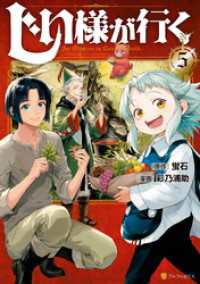基本説明
The author drew on many years' experience in Asian studies publishing to prepare this work.
Full Description
The biggest hurdle for junior scholars looking to embark on an academic career is to make the transition from PhD candidate to that first (ideally tenured) job. An imperative part of this process is getting published and yet increasingly this is becoming something harder to achieve.
This book aims to guide both young and more experienced scholars through some of the pitfall s and complexities of getting published. Furthermore, the far-reaching changes affecting academic publishing (e-publishing , new printing technologies, Creative Commons licensing, the collapse of the library market, etc.) are discussed, focusing on their future effect on academic authors.
Although it is in part a practical guide to navigating all stages of the publication process, Getting Published is not simply another 'how to' guide. Rather, its key concern is to give its readers an understanding of the stages, processes and pitfalls involved in getting from an idea in one's head (or indeed a PhD thesis on one's desk) to a published academic book in a colleague's hand. With better knowledge, would-be authors have greater control over their situation.
Contents
Preface What this book will do for you * What's in a name? * A clear focus means clear advice * Have you got what it takes? * About the authors * Beyond the book * Acknowledgements 1. Behind the scenes The people inside the publishing house * The people outside the publishing house * Producing the physical books * Bringing the books to customers * The state of the book industry * The book industry and you, the author 2. Planning your book Understanding needs and desires * Success is not one thing * Questions to ask yourself * Which market? * Clarifying your focus * Mapping the book * Choosing a great title * In celebration of odd titles * Annotating and evaluating the table of contents 3. From thesis to book The pressures of junior scholarship * Why is a thesis not a book? * What to do with your thesis * Assessing your material * Getting started * Things you will need to cut * Things you will need to add 4. Producing a shorter (or collected) work Why write articles? * Reworking (or recycling) material * But is this what you really want? * Planning and writing your article * Finding the right journal * Getting your article published * Contributing a chapter to an edited volume * Editing a multi-author volume 5. Writing your book Language * Which language? * Style * Cutting the fog * Presentation * Permissions and the use of copyright material * The writing experience * Survival tips for blocked writers 6. Finding the right publisher Identifying the candidates * Connections, connections * Approaching the publisher * What if a publisher contacts you? * How to be concise * Proposal etiquette * The importance of the pitch * Waiting on tenterhooks * Where now? 7. Getting accepted Preparing and sending the text * External assessment * Typical peer review questions * New forms of peer review * Internal assessments and recommendations * Financial projections * Sources of income * Price and profitability * Decision time 8. Negotiating a contract Kinds of rights * Open Access and Creative Commons * Set in stone or open to negotiation? * Before you sign 9. Working towards publication Enter the production manager * Finalizing your manuscript * From disk to bookshelf * The editing process * Designing and typesetting your book * Backroom or Bangalore? * Producing camera-ready copy * Proofing * Indexing * Printing, binding and delivery 10. Promoting your book What is academic book marketing? * Everyday life in the marketing department * The importance of the author in promoting books * What you can do before publication * What you can do after publication * Promotional DOs and DON'Ts 11. Going it alone Making the decision * Deciding on format * Doing the work * Finding a partner * Promoting and distributing your book * Measures of success Epilogue 185 Publishing revolutions * Electronic formats * E-book readers * POD and the bookshop as content kiosk * Free Internet repositories * The content revolution * Bite-sized scholarship * Creative marketing * The book is dead, long live the book Top tips Appendix 1: Practical style and presentation issues Spelling and grammar * Document formatting * Font matters * Layout and punctuation * Quotations, notes, citations, etc. * Nontext elements * Graphic images and their formats * Other technical issues Appendix 2: Common editing and proof-reading marks Appendix 3: Compendium of publishing terms Further reading Index








